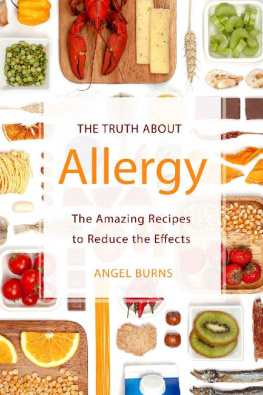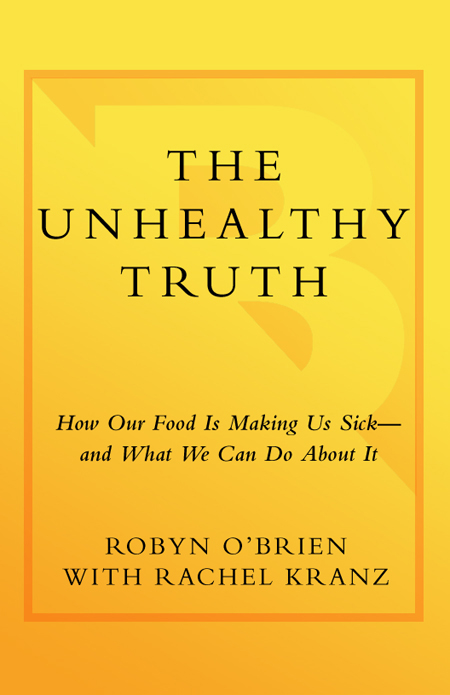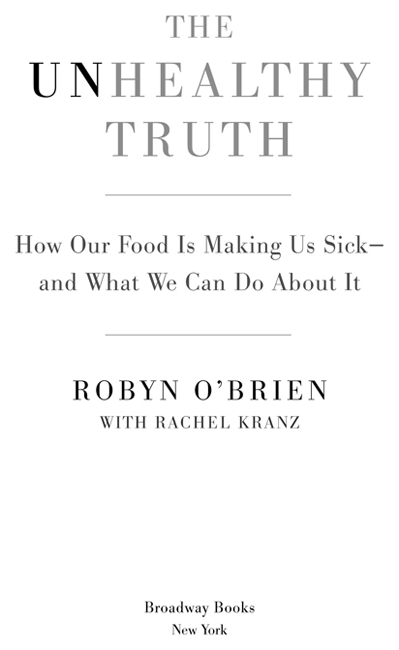FOREWORD
The landscape of children's health has changed. No longer can we assume that our children will have a healthy childhoodcertainly not in the face of the current epidemics of autism, ADHD, asthma and allergies, childhood cancers, childhood obesity, and diabetes. In fact, autism, ADHD, asthma and allergies, or the 4-A disorders, as I termed them in my recent book, Healing the New Childhood Epidemics: Autism, ADHD, Asthma and Allergies, have all increased dramatically in the last two decades. Approximately 30 million childrenmore than one-third of our kidsare affected by one of these four new childhood epidemics. This is not something we can just accept. This begs explanation.
We have witnessed a meteoric rise in the incidence of autismat least 1,500% in the last two-plus decades. You cannot meet anyone these days who has not felt the reach of this epidemic, whether they have a child affected by autism or have a friend, business associate, or family member with an affected child. Autism has entered every walk of life, every profession, and every socioeconomic group. The statistics speak for themselves: in the United States, one in every 150 children is affected by autism. The numbers are even more staggering in New Jersey, where one in 94 children and one in 60 boys is affected. Some have tried to attribute this spike in incidence to better diagnosis. But although there has been expansion of the autism spectrum to include some more highly functional individuals, such as those with Asperger's syndrome, this does not explain the epidemic. A study by the MIND Institute in California in 2002 confirmed this fact as well. As I frequently say to parents, therapists, teachers, clinicians, and researchers alike, if that is the case, show me all of the thirty-year-old autistics. They're just not there. We are in the midst of a relatively new epidemic.
One in eleven children struggles with asthma, and one in four is affected by allergies. The incidence of allergy has increased significantly over the past two decades, and allergy to peanuts has more than doubled from 1997 to 2002. We have seen peanut butter banned from schools across the nation due to the number of children for whom contact with and in some cases even the smell of peanut butter may cause a deadly anaphylactic episode. The same disturbing trend holds true in the rise of childhood obesity and childhood onset of type II diabetes. There is something very troubling out there that is affecting our kids. We have all heard of the canary in the coal minethe sensitive bird miners sent ahead of them to test the atmosphere. If the bird lived, they knew there was enough oxygen, but if it died, they knew they could go no farther. Sadly, our children have become those canaries, and those with lower thresholds for the toxicants that pervade our environment are being unmasked more and more.
My practice has seen thousands of children from around the country and the world who are struggling with these new epidemics, but we are not alone in witnessing these disturbing trends. Pediatricians across this country and around the world are seeing more of these children, and these physicians can tell you that the problems we see now simply did not exist two decades ago. These epidemics our children face are new, and we must find a way to reverse them.
There is a growing body of evidence that supports the belief that the increased incidence of these childhood disorders arises from a genetic predisposition coupled with environmental triggers or insults. Environmental insults to which our children are increasingly being exposed include common chemicals (such as PCBs, flame retardants, plasticizers, and pesticides), heavy metals (including mercury, lead, arsenic, cadmium, and aluminum), countless types of food additives, and an ever-increasing number of genetically modified foods. These environmental toxicants can increase oxidative stress (from extremely reactive molecules that damage cell membranes and other cellular structures), wreaking havoc on cellular function at all levels. Changes caused by oxidative stress can also lead to chronic inflammation, which may be a common underlying mechanism in many of the childhood disorders our children are experiencing. Thankfully, we are learning new ways to remediate oxidative stress through the use of dietary and supplemental antioxidants, such as fruits and vegetables; vitamins A, C, E, and carotenoids; the minerals selenium and zinc; herbs such as green tea, pycnogenol, and quercetin; and nutraceuticals such as coenzyme Q-10. Some of these antioxidant nutrients (including green tea, pycnogenol, and curcumin) also have anti-inflammatory properties, as does one of the most important natural anti-inflammatories: omega-3 essential fatty acids. As these epidemics continue and more of our children are affected, more research emerges to support this point of view. Also, increasing numbers of physicians and researchers are lending their support and expertise, shedding light on the factors contributing to these devastating disorders.
Robyn O'Brien's compelling examination of the effects that recent changes in our food supply are having on our kids cannot be ignored. Genetically modifying foods leads to the possibility of changing protein structures, whereby they are recognized as foreign to our immune systems. The immune system then attacks these foreign substances, but unfortunately may also overreact and attack the body's own cells, violating its primary credo, which is differentiating between self and non-self. This attack on self, initiated by these foreign proteins, then leads to all types of autoimmune disorders and dysfunction.
Through comprehensive integrative treatment approaches, we have been able to help more and more children. Though our ability to help greater numbers of these affected children is gratifying from a therapeutic perspective, it is not enough. Prevention is the key, and in this regard, everyone needs to play a rolenot only clinicians, physicians, researchers, and parents but also government and corporations. It always has been the parents who have been so important, raising their voices about the epidemics affecting their children and driving the quest for answers. The mothers and fathers I see every day are the most determined people I have ever met, refusing to accept the gloom and doom they have been fed about their child's condition and doggedly pursuing answers even when they are told there are none. We must reduce the toxic exposures to our children. The course of genetic conditions is difficult to significantly alter, but thankfully, there are no such things as genetic epidemics. Environmentally induced disorders connote more malleability, and the possibility for real change.
We must move beyond the treatment realm, which is where I live in terms of my caring for these children, and additionally focus on the realm of prevention. This is where the voice of a mother such as Robyn, with multiple kids affected by these disorders, plays such a crucial role. She is an inspiration to mothers around the world, showing that you don't have to sit back and watch the health of your children declineyou can take an active role. Founding AllergyKids, creating a Web site and a forum on the Internet for open communication, has helped Robyn to empower parents to enact changes in our society. She has alerted people to the dangers of our toxic environment, including our food and the adverse effects it has on our children, and this has placed her in the forefront of the movement for change. Bucking the powers that be in an Erin Brockovich way has made her simultaneously loved and admired by some and disliked by others, depending on their perspective and position. She has emerged as a true American hero and a beacon of light for our kids, for beyond treatment of affected children, prevention of these disorders in the next generation of kids is paramount. It can't be said too strongly: this effort must not be limited to physicians, researchers, and parents, but rather must also include government and our corporate structure to bring about truly significant change. To reduce our children's exposures to environmental toxins, it will take a vision and mission of truth, acknowledgment of contributing factors, and, most important, a change in policies and procedures. We must cooperate at every level to make our environment safer and less toxic for our children, and this is Robyn's passion and her life's work. It is what must be done. Our children deserve no less.











